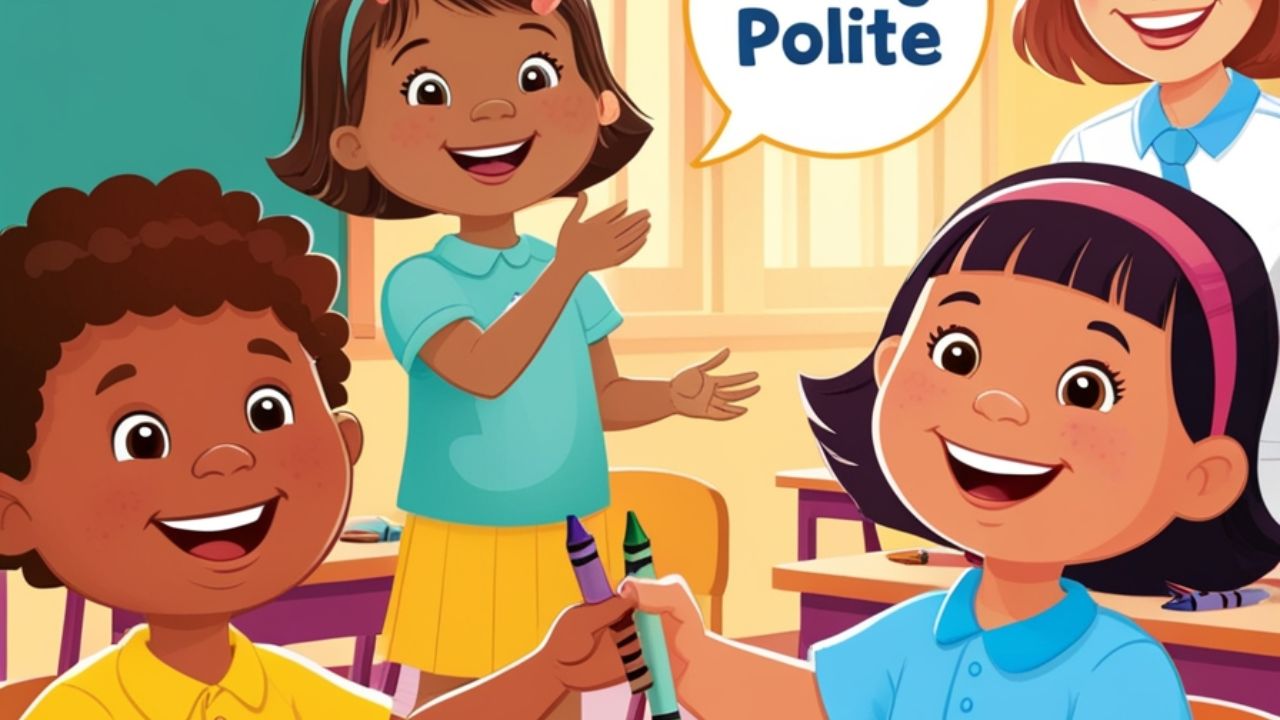Being polite means using good manners in daily life. It’s when you say “please” or “thank you” because it’s the right thing to do. Being courteous goes deeper. It shows real care for others’ feelings and brings warmth to your actions.
When someone helps another person with kindness, that’s courtesy in action. It isn’t about rules or manners—it’s about genuine respect. Politeness keeps people friendly, but courtesy makes moments meaningful. Both build kindness and harmony in small, everyday ways.
In simple terms, politeness keeps peace, while courtesy spreads happiness. You use polite words to show respect, and you use courteous acts to show your heart. When both meet, they create understanding that makes everyone feel valued.
Understanding the Nuanced Meanings of Polite and Courteous
Being polite means showing good manners and treating others with respect. It’s when you speak kindly, use gentle words, and behave properly. Being courteous adds warmth to your actions. It shows that you truly care about others and wish to make them feel comfortable.
In daily life, politeness keeps peace among people, while courtesy builds stronger friendships. Both teach kindness and help everyone live happily together. When you act kindly and think about others’ feelings, you make the world a more caring and friendly place.
| Word | Origin | Meaning (Common Use) |
| polite | Latin politus (“polished”) | Adhering to social rules or etiquette |
| courteous | Old French curteis (“polite, courtly”) | Showing kindness, generosity, and respect |
Key Differences Between Polite and Courteous: A Semantic Breakdown
Politeness
- Politeness means using kind and respectful words in every situation.
- It helps people talk and work together peacefully.
- Saying “please,” “thank you,” and “excuse me” shows good manners.
- Polite behavior makes others feel respected and comfortable.
- It creates harmony and spreads kindness in everyday life.
See also : Any Problem or Any Problems? Grammar Guide Explained
Courtesy
Courtesy means being kind and thoughtful toward others. It shows respect through small, caring actions like helping someone carry books or giving a warm smile. True courtesy comes from the heart and makes people feel valued, safe, and respected in every situation.
Showing courtesy builds trust and friendship. It teaches you to listen, share, and act gently. A courteous person spreads happiness and calm wherever they go. Simple acts of kindness, like saying “thank you,” make daily life brighter and more peaceful for everyone.
| Aspect | Polite | Courteous |
| Tone | Formal, proper | Warm, heartfelt |
| Intention | Avoid social offense | Show genuine respect |
| Examples | Using proper titles | Offering help driven by empathy |
Politeness as a Social Strategy

- Politeness helps people avoid conflict and keep conversations calm.
- It shows respect for others’ feelings and opinions.
- Using soft, kind words makes communication smoother.
- Polite behavior builds trust and understanding in groups.
- It strengthens social bonds and keeps relationships peaceful.
Courtesy as a Form of Respect and Consideration
- Courtesy means caring about others’ comfort and feelings.
- It shows true respect through thoughtful actions and kind words.
- Being courteous makes people feel valued and understood.
- Courteous behavior builds strong friendships and trust.
- It creates a gentle and positive environment for everyone.
Polite vs Courteous in Real-Life Contexts
Consider these scenarios:
Example 1: Work Email
- A polite email uses clear and respectful language.
- Start with a kind greeting to set a friendly tone.
- Use short, simple sentences to share your message.
- A courteous email adds warmth and care in words.
- Ending with thanks shows appreciation and good manners.
Example 2: Office Door
- Holding the office door open shows kindness and respect.
- A small smile makes the gesture warm and friendly.
- Courtesy means noticing when someone needs help.
- Waiting a moment for others shows real thoughtfulness.
- Such simple actions build a caring and polite workplace.
Example 3: Complaining
- A polite complaint uses calm and respectful words.
- Speaking gently helps others listen and understand better.
- Courtesy means showing patience while explaining a problem.
- Thanking the person for help keeps the talk friendly.
- Kind complaints solve issues without hurting anyone’s feelings.
Cultural Perceptions of Politeness and Courtesy
- Politeness and courtesy look different in every culture.
- In Japan, bowing shows deep respect and good manners.
- In the UK, gentle words and apologies express kindness.
- Americans use friendly smiles and casual greetings as courtesy.
- Understanding cultural manners builds harmony and mutual respect.
How Politeness and Courtesy Influence Relationships
- Politeness keeps communication calm and respectful between people.
- Courtesy adds warmth that builds trust and closeness.
- Kind words and actions prevent misunderstandings and hurt feelings.
- Both values create peace and comfort in relationships.
- Together, they make friendships and teamwork stronger every day.
See also : Talking Out of the Side of Your Mouth: Meaning & Use
Tips to Be Polite Without Being Distant
- Use polite words but keep your tone friendly and natural.
- Smile and make eye contact to show warmth and care.
- Listen carefully when others speak to you.
- Add small personal touches, like using names kindly.
- Courtesy grows when respect and kindness work together.
Ways to Show True Courtesy in Daily Life
- Courtesy means helping others without being asked.
- Offer your seat or hold the door for someone kindly.
- Speak softly and use kind, respectful words always.
- Say “thank you” and “please” with real feeling.
- Small courteous acts make every day brighter for everyone.
Professional Etiquette: Polite vs Courteous in the Workplace
- Courtesy means helping others without being asked.
- Offer your seat or hold the door for someone kindly.
- Speak softly and use kind, respectful words always.
- Say “thank you” and “please” with real feeling.
- Small courteous acts make every day brighter for everyone.
Body Language and Nonverbal Cues of Politeness and Courtesy

- Politeness shows in calm eyes, gentle smiles, and soft gestures.
- A courteous person stands straight and keeps friendly posture.
- Nodding while listening shows respect and care.
- Open hands and relaxed movements create comfort for others.
- True kindness appears through peaceful and thoughtful expressions.
Case Study: A Customer Service Scenario
In this customer service example, a shopper came back with a shirt that didn’t fit well. The helper greeted them kindly and offered a new choice. That warm attitude showed true care and made the person feel happy and respected.
Good customer service means helping people with patience and kindness. It’s about listening carefully, fixing problems, and keeping a friendly tone. When helpers act politely and think about others’ comfort, they turn a small issue into a pleasant experience.
Common Misunderstandings and Misuses
- Many people think politeness and courtesy mean the same thing.
- Some act polite only through words, not true kindness.
- Overly formal manners can seem cold or unfriendly.
- Too much courtesy may look false or forced.
- Cultural differences often cause confusion in polite behavior.
Language Tips: Express Politeness & Courtesy Clearly
- Use gentle words like “please,” “thank you,” and “excuse me.”
- Add warmth with phrases such as “I appreciate your help.”
- Speak slowly and kindly to show courtesy.
- Avoid harsh or bossy language in any talk.
- End messages politely to leave a friendly impression.
Final Thoughts
In the end, politeness helps people stay respectful and calm in daily life. Courtesy adds real kindness that comes from the heart. When both are used together, they make every meeting and talk peaceful, pleasant, and full of understanding.
Showing polite and courteous behavior builds a friendly world. It teaches respect, care, and empathy for others. Simple gestures, gentle words, and thoughtful actions create strong bonds that bring people closer and make everyone feel valued and happy.
FAQs
What is an example of courtesy and politeness?
Saying “please,” “thank you,” or holding the door for someone shows courtesy and politeness.
What is the difference between polite and respectful?
“Polite” means showing good manners; “respectful” means showing admiration or consideration for others’ feelings or rights.
What is the difference between polite and impolite?
“Polite” shows good manners and kindness, while “impolite” means rude, inconsiderate, or disrespectful behavior.
What is the difference between courteous and respectful?
“Courteous” focuses on manners and behavior; “respectful” emphasizes genuine regard or esteem for others.

Join Bibcia on a journey to master English grammar. Discover easy lessons, writing tips, and practical examples designed to make learning grammar simple and effective.










